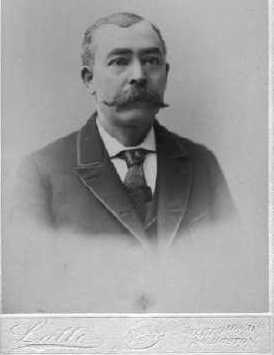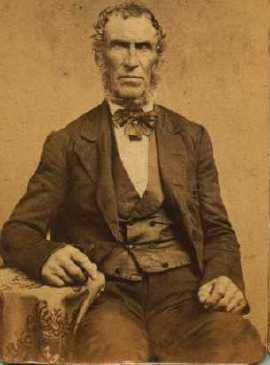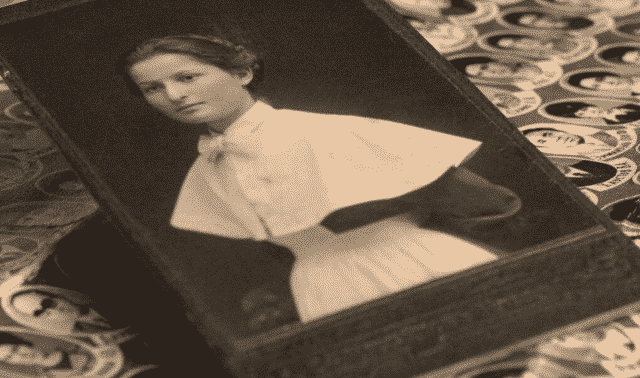Whatever the reason, assigning a date to a male portrait presents particular challenges. In the absence of a photographer’s imprint or family story, it is necessary to rely on costume details. Even when other evidence such as a photographer’s imprint provides a broad range of dates, using clothing details can help you arrive at a more specific date. When compared to the subtle differences in men’s clothing, women’s fashion changes seem dramatic. Dating a portrait relying on men’s clothing requires an observant eye and consultation with a costume encyclopedia. Let’s compare two images as an example.

This photograph from Ruth Robertson is unidentified, but a photographer’s imprint provides a range of 1879-1899. In the second image of Levi Wilder from Mimi Malcolm, family tradition identified him by name, but with no date for the image. A comparison of these two images highlights the process of dating these images through costume clues. In these two photographs, the basic costume included pants, jacket, vest, shirt and tie.

Levi B. Wilder
Shirts and ties also provide clues to the time period. Look at the differences between the loosely tied solid black bow in the first image and the patterned necktie in the second picture that resembles what men wear today. The shape, color and way a necktie is worn can date a photograph. Be sure to pay attention to the position of the shirt collar. For the decades in which ties are similar, you may date the image by whether the collar is worn up or down over the tie.
Other factors include the shape of a suit’s pant leg and even the type of shoe. In order to help you date an image based on men’s clothing, consult a good resource like John Peacock’s Men’s Fashion: The Complete Sourcebook (Thames and Hudson, $29.95). It features color illustrations of clothing, hairstyles and accessories.
Find out how to submit your own picture for possible analysis by Maureen Taylor.
Solve your family photo mysteries with these books by Maureen A. Taylor:



